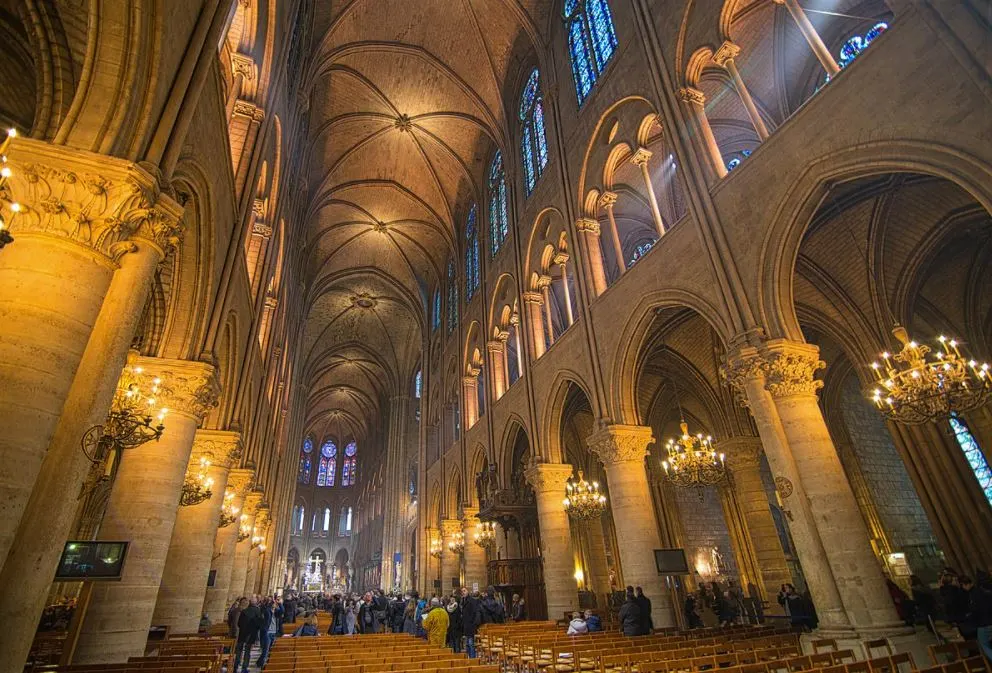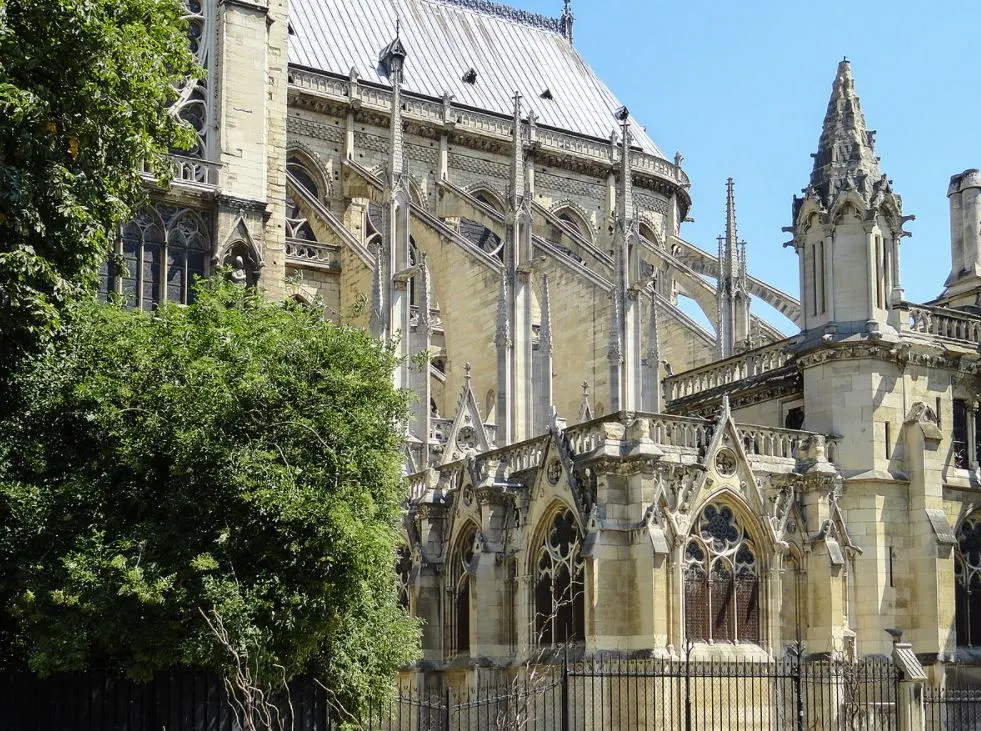One of the most iconic churches in the world can be found on one of the most famous river islands in the world in the heart of the city of Paris.
In this article, we’ll take a closer look at some of the most interesting facts about the Notre-Dame Cathedral in Paris, a marvelous Gothic Cathedral often referred to as simply “Notre-Dame.”
1. It’s located on the Île de la Cité in the historical heart of Paris
It’s harder to find a more historic location in the city of Paris than the place where the city was founded as “Lutetia” by the Romans, and subsequently “refounded” during the Middle Ages.
The Île de la Cité is just one of two remaining natural river islands in Paris and the city’s historical heart. That’s why the most famous church in Paris and all of France was founded here.
Just two other famous medieval buildings have survived since the Middle Ages. These are the Conciergerie prison, the location where Marie Antoinette awaited her execution in 1793, and Sainte Chapelle, another famous church renowned for featuring some of the most amazing stained glass windows in the world.

2. The cathedral was built in the 12th and 13th centuries
The Notre Dame Cathedral was mostly completed between 1163 and 1260, even though a lot of alterations and renovations have been conducted in the following centuries.
It was initiated by the Bishop of Paris at the time named Maurice de Sully who wanted a much larger church to replace the small church on this location called the “Church of Saint-Jean-le-Rond.” The cornerstone of the building was laid in the presence of both King Louis VII of France and Pope Alexander III.
Excavations conducted in 2019 discovered that the stones used to build the structure were quarried in Vexin, a historical county just northwest of Paris. This makes it fair to assume that these were brought to Paris by boat on the River Seine.

3. The structure featured some fascinating innovations at the time
The Bishop wished the church to be built in the relatively new Gothic architectural style at the time. One of the earliest examples of this style is the Basilica of Saint-Denis just outside of Paris.
This style had only emerged in France a few decades earlier around 1140 and is characterized by the search for height in the form of spires and pointy windows, a move away from the Romanesque style that preceded it.
The cathedral in Paris was a revolutionary structure in many ways because it employed a couple of new building techniques. These include:
- Rib vaulting – a technique that employs ribbed arched to cover a large open space, in this case, the nave of the church.
- Flying buttresses – Arches extending out of the structure to help sustain the load-bearing on the outer walls.
The use of the flying buttresses allowed the walls to be built much higher and thinner because they don’t have to support all the weight. That’s exactly what the engineers had in mind with this prime example of Gothic architecture.

4. The towers of the church held a remarkable record until 1889
Even though it “only” took about a century to build this amazing structure, it was built at a massive scale. The church has a total length of 128 meters (420 feet), a maximum width of 48 meters (157 feet), and the nave extends to a height of 35 meters (115 feet).
The dominating feature of the church is its two towers which are situated on the west façade of the building. These reach a height of 69 meters (226 feet) and were the final major features of the cathedral to be built between 1220 and 1250.
One of the most remarkable facts about Notre Dame Cathedral in Paris is that its two towers were the tallest structures in the city until the completion of the Eiffel Tower in 1889. The south tower was completed in 1240 which means it held this record for 669 years, quite amazing!

5. A fire destroyed the iconic spire and roof of the cathedral in 2019
One element of the church, the so-called “flèche” or spire located over the transept, was even higher. Even though the original spire was completed in the 13th century as well, it was removed in 1786 and rebuilt in oak covered with lead in the late 19th century.
This magnificent Gothic element of the church originally reached a height of 91.44 meters (300.0 feet) but was unfortunately destroyed during the fire that emerged in April 2019, along with large parts of the roof.

More Interesting facts about Notre-Dame Cathedral
6. The church was consecrated to the Virgin Mary, which is why it is called “Notre Dame,” which translates to “Our Lady.”
7. The cathedral has been referred to as “liber pauperum,” which translates to “The poor people’s book.” This is due to the numerous sculptural decorations which depict Biblical stories and which pretty much read like a book.
8. The distinctive gargoyles on the church were added around 1240 and not only served their purpose as remarkable decorations but also had a practical purpose. They were the medieval version of a water spout and protected the structure from rainwater coming down the roof. This avoided the building being damaged by erosion.
9. The rose window on the west façade of the church was the first to be added and was completed in 1225. This was followed by the north rose window in 1250 and the south rose window in 1260.
10. The cathedral features 10 main bells, and multiple secondary bells, none of which were the original. The original bell ringing started as early as 1198 but all of these bells were replaced multiple times over the centuries. New bells were added as recently as 2013 in celebration of the cathedral’s 850th anniversary.
11. The church gained worldwide attention following the publishing of Victor Hugo’s 1831 novel “Notre-Dame de Paris,” known in English as the “The Hunchback of Notre-Dame.”
12. The cathedral was completely renovated between 1844 and 1864 under the supervision of famous French architect Eugène Viollet-le-Duc. This was mostly the result of the increased awareness of the church’s importance following the publication of this novel.
13. The cathedral is undergoing a serious renovation at the moment to restore the damage from the 2019 fire. This will be done while keeping in mind the “historic, artistic and architectural interest of the structure.” It’s estimated that this work will be completed in the Spring of 2024.
14. The church has always been one of the most popular tourist attractions in Paris and is visited by an estimated 12 million people annually.
15. Some of the most important relics in Christendom are stored inside the church. These include the Crown of Thorns, a sliver of the true cross, and a nail from the true cross.



